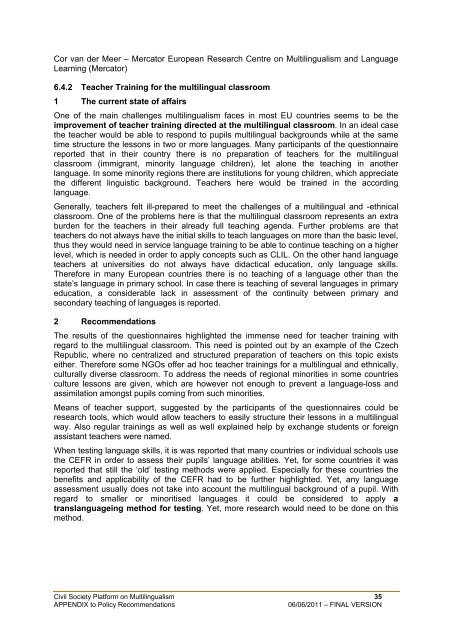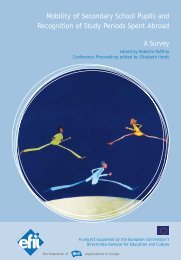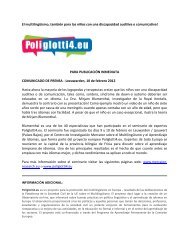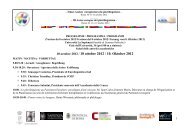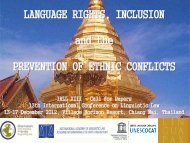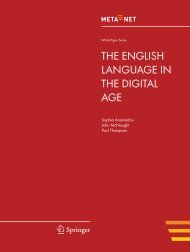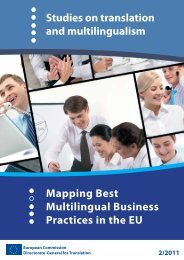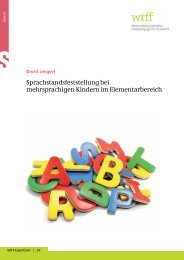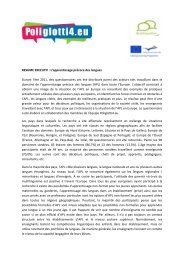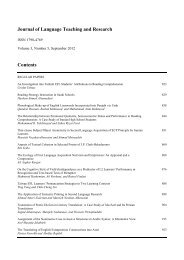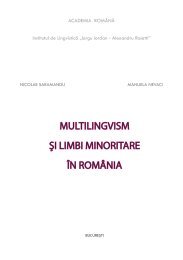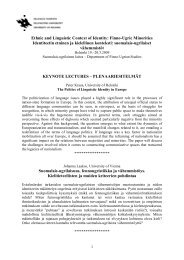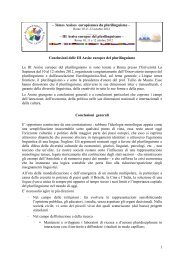FULL VERSION - European Commission - Europa
FULL VERSION - European Commission - Europa
FULL VERSION - European Commission - Europa
You also want an ePaper? Increase the reach of your titles
YUMPU automatically turns print PDFs into web optimized ePapers that Google loves.
Cor van der Meer – Mercator <strong>European</strong> Research Centre on Multilingualism and LanguageLearning (Mercator)6.4.2 Teacher Training for the multilingual classroom1 The current state of affairsOne of the main challenges multilingualism faces in most EU countries seems to be theimprovement of teacher training directed at the multilingual classroom. In an ideal casethe teacher would be able to respond to pupils multilingual backgrounds while at the sametime structure the lessons in two or more languages. Many participants of the questionnairereported that in their country there is no preparation of teachers for the multilingualclassroom (immigrant, minority language children), let alone the teaching in anotherlanguage. In some minority regions there are institutions for young children, which appreciatethe different linguistic background. Teachers here would be trained in the accordinglanguage.Generally, teachers felt ill-prepared to meet the challenges of a multilingual and -ethnicalclassroom. One of the problems here is that the multilingual classroom represents an extraburden for the teachers in their already full teaching agenda. Further problems are thatteachers do not always have the initial skills to teach languages on more than the basic level,thus they would need in service language training to be able to continue teaching on a higherlevel, which is needed in order to apply concepts such as CLIL. On the other hand languageteachers at universities do not always have didactical education, only language skills.Therefore in many <strong>European</strong> countries there is no teaching of a language other than thestate’s language in primary school. In case there is teaching of several languages in primaryeducation, a considerable lack in assessment of the continuity between primary andsecondary teaching of languages is reported.2 RecommendationsThe results of the questionnaires highlighted the immense need for teacher training withregard to the multilingual classroom. This need is pointed out by an example of the CzechRepublic, where no centralized and structured preparation of teachers on this topic existseither. Therefore some NGOs offer ad hoc teacher trainings for a multilingual and ethnically,culturally diverse classroom. To address the needs of regional minorities in some countriesculture lessons are given, which are however not enough to prevent a language-loss andassimilation amongst pupils coming from such minorities.Means of teacher support, suggested by the participants of the questionnaires could beresearch tools, which would allow teachers to easily structure their lessons in a multilingualway. Also regular trainings as well as well explained help by exchange students or foreignassistant teachers were named.When testing language skills, it is was reported that many countries or individual schools usethe CEFR in order to assess their pupils’ language abilities. Yet, for some countries it wasreported that still the ‘old’ testing methods were applied. Especially for these countries thebenefits and applicability of the CEFR had to be further highlighted. Yet, any languageassessment usually does not take into account the multilingual background of a pupil. Withregard to smaller or minoritised languages it could be considered to apply atranslanguageing method for testing. Yet, more research would need to be done on thismethod.Civil Society Platform on Multilingualism 35APPENDIX to Policy Recommendations06/06/2011 – FINAL <strong>VERSION</strong>


